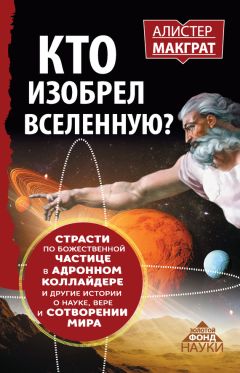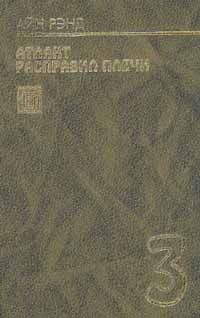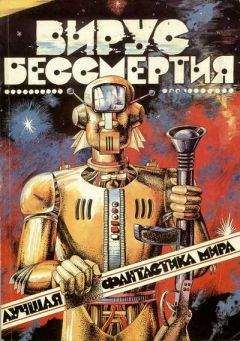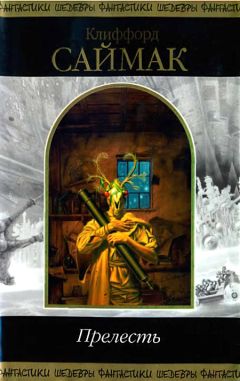364
Хороший пример – принятая в эпоху Возрождения метафора «двух книг» о религии и науке, см., например, Giuseppe Tanzella-Nitti, «The Two Books Prior to the Scientific Revolution», «Annales Theologici» 18, 2004, pp. 51–83.
C. S. Lewis, «Essay Collection», London: HarperCollins, 2002, p. 21.
Paul Claudel, «Introduction à un poème sur Dante», в сб. «Positions et Propositions», Paris: Gallimard, 1928, pp. 161–86.
Подробнее об этом см. Alister E. McGrath, «A Gleam of Divine Truth: The Concept of Myth in Lewis’s Thought», в кн. «The Intellectual World of C. S. Lewis», Oxford: Wiley-Blackwell, 2013, pp. 55–82.
Это прекрасно объясняется в книге Andrew Louth, «Discerning the Mystery: An Essay on the Nature of Theology», Oxford: Clarendon Press, 1983.
В частности, в кругах англиканских «модернистов» в период между двумя мировыми войнами, см. W. Mark Richardson, «Evolutionary-Emergent Worldview and Anglican Theological Revision: Case Studies from the 1920s», «Anglican Theological Review» 92, no. 2, 2010, pp. 321–345.
Christian Smith, «Moral, Believing Animals: Human Personhood and Culture», Oxford: Oxford University Press, 2009, pp. 63–94.
Как говорится в книге Roy F. Baumeister, «Meanings of Life», New York: Guilford Press, 1991.
C. P. Snow, «The Two Cultures», Cambridge: Cambridge University Press, 1959.
См. Everett L. Worthington Jr., et al., «A Psychoeducational Intervention to Promote Forgiveness in Christians in the Philippines», «Journal of Mental Health Counselling» 32, no. 1, 2010, pp. 75–93.
Dante, «Paradiso» XXXIII, 85–90.
John Donne, «The First Anniversarie: An Anatomy of the World», line 213; в кн. W. Milgate (ed.), «The Epithalamions, Anniversaries, and Epicedes», Oxford: Clarendon Press, 1978, p. 28.
См., например, C. S. Lewis, «The Discarded Image: An Introduction to Medieval and Renaissance Literature», Cambridge: Cambridge University Press, 1964.
Hermann Hesse, «Die Sehnsucht unser Zeit nach einer Weltanschauung», «Uhu» 2, 1926, pp. 3–14.
Nancy Cartwright, «The Dappled World: A Study of the Boundaries of Science», Cambridge: Cambridge University Press, 1999.
C. S. Lewis, «Christian Reflections», Grand Rapids: Eerdmans, 1967, p. 65.
Объяснение этой темы см. в статье Giuseppe Tanzella-Nitti, «La dimensione cristologica dell’intelligibilità del reale», в кн. «L’intelligibilità del reale: Natura, uomo, macchina», ed. Sergio Rondinara, Rome: Città Nuova, 1999, pp. 213–25.
Virginia Woolf, «Sketch of the Past», в сб. «Moments of Being», ed. Jeanne Schulkind, 2nd ed., New York: Harcourt Brace & Company, 1985, p. 72.
John C. Avise, «The Genetic Gods: Evolution and Belief in Human Affairs», Cambridge, MA: Harvard University Press, 1998, p. vii.
Salman Rushdie, «Is Nothing Sacred?», The Herbert Read Memorial Lecture 1990, Cambridge: Granta, 1990, p. 9.
Wolfgang Schluchter, «Die Entstehungsgeschichte des modernen Rationalismus», Frankfurt am Main: Suhrkamp, 1998.
Письмо от 21 марта 1955 года, цит. по «Albert Einstein – Michele Besso Correspondence, 1903–55», ed. Pierre Speziali, Paris: Hermann, 1972, pp. 537–538.
Прекрасный анализ этой проблемы можно найти в работе N. David Mermin, «Physics: QBism puts the Scientist back into Science», «Nature» 507, 2014, pp. 421–3. Подробное описание «квантового байесионизма», сокращенно «кьюбизма» (QBism), см. в статье Christopher A. Fuchs, N. David Mermin, Rüdiger Schack, «An Introduction to QBism with an Application to the Locality of Quantum Mechanics», «American Journal of Physics» 82, no. 749, 2014, doi: 10.1119/1.4874855.
См. классическую работу Paul Ricouer, «Narrative Time», «Critical Inquiry» 7, no. 1, 1980, pp. 169–90.
P. A. Schilpp (ed.), «The Philosophy of Rudolf Carnap», La Salle, IL: Open Court Publishing, 1963, pp. 37–8.
Erwin Schrödinger, «Nature and the Greeks», «Science and Humanism», Cambridge: Cambridge University Press, 2014.
Об этой точке зрения подробно рассказано в великолепном эссе Roger Scruton, «Scientism in the Arts and Humanities», «The New Atlantis», no. 40, Fall 2013, pp. 33–46.
Karl von Meyenn (ed.), «Eine Entdeckung von ganz außerordentlicher Tragweite: Schrödingers Briefwechsel zur Wellenmechanik und zum Katzenparadoxon», Berlin: Springer, 2011, p. 490.
Samuel Hugo Bergman, «Dialogical Philosophy from Kierkegaard to Buber», Albany, NY: State University of New York Press, 1991.
Liliann Manning, Daniel Cassel, Jean-Christophe Cassel, «St Augustine’s Reflections on Memory and Time and the Current Concept of Subjective Time in Mental Time Travel», «Behavioral Sciences» 3, no. 2, 2013, pp. 232–243.
См., например, Karl K. Szpunar, «On Subjective Time», «Cortex» 47, 2011, pp. 409–411; Idem, «Evidence for an Implicit Influence of Memory on Future Thinking», «Memory & Cognition» 38, 2010, pp. 531–540.
О том, как ученые работают с междисциплинарными границами, говорится в статье Elaine Howard Ecklund, Jerry Z. Park, Katherine L. Sorrell, «Scientists Negotiate Boundaries between Religion and Science», «Journal for the Scientific Study of Religion» 50, no. 3, 2011, pp. 552–569.
Rushdie, «Is Nothing Sacred?», p. 7.
David Brewster, «Life of Sir Isaac Newton», new ed., rev. W. T. Lynn, London: Tegg, 1875, p. 303.
Steven Weinberg, «Dreams of a Final Theory: The Search for the Fundamental Laws of Nature», London: Hutchinson Radius, 1993, p. 196.
Peter W. Atkins, «Creation Revisited», Harmondsworth: Penguin, 1994, p. 21.
«The Rubáiyát of Omar Khayyám», trans. Edward Fitzgerald, 1879, p. lxxii.
Ursula Goodenough, «The Sacred Depths of Nature», New York: Oxford University Press, 1998, p. 10.
Rushdie, «Is Nothing Sacred?», p. 8.
Carl Sagan, «Pale Blue Dot: A Vision of the Human Future in Space», London: Headline, 1995, p. vi.
Marcel Proust, «La prisonnière», Paris: Gallimard, 1925, p. 69. ‘Le seul véritable voyage, le seul bain de Jouvence, ce ne serait pas d’aller vers de nouveaux paysages, mais d’avoir d’autres yeux, de voir l’univers avec les yeux d’un autre, de cent autres.’
Smith, «Moral, Believing Animals», p. 64.




